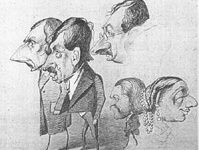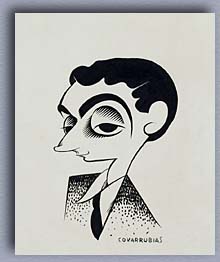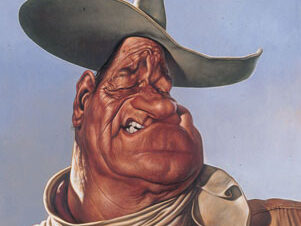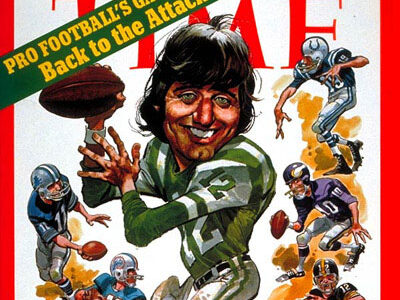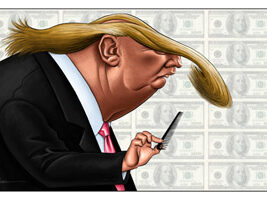About Caricature Art
For many, the word “caricature” brings up associations like boardwalks, resort destinations, and shopping malls, where an artist may be present with an easel, creating quick and silly portraits of their subjects. But caricature art is so much more than a fun pastime at the beach– it has a long and storied history in our culture and an important place in the world of art.
For instance, did you know that da Vinci drew caricatures? How about Claude Monet, or Honoré Daumier? These famous names are often associated with their more serious and elevated works, but all of these artists found inspiration in the creation of exaggerated portraiture.
In his book How to Draw Caricatures, Lenn Redman wrote that the essence of caricature is in exactly that exaggeration—not in distortion. He suggests that caricaturists exaggerate for the sake of truth, as opposed to distorting in order to deny that truth. If you spend some time glancing through our celebrity examples, you’ll see that some caricaturists can stretch that exaggeration to extremes, while others gently create kind cartoon portraits. In either case, through creating a representation that does not represent what a person looks like, but who they are, often times caricatures look more like their subject than an actual photograph.
Many caricature artists shape the way today’s caricaturists draw and approach their art. Some shaped the very society in which they lived.
Historically, caricature as political or topical cartoon served to create an accessible visual representation of absurdity, vice, or character. The French Phillipon’s magazines portrayed Louis-Philippe as a pear, which was both a play on his distinctive head-shape and a French sexual pun. Very quickly this symbol became universally accepted and wax pears were even sold as tongue-in-cheek souvenirs. Ultimately, a law was passed concerning French freedom of press and, in effect, banning political caricature.
The political impact of caricature continued through the work of Thomas Nast, who helped to bring down the corrupt Boss Tweed ring and New York’s Tammany Hall political machine through his caricatures. Nast’s work created an instant visual understanding of his point of view, allowing the general public to form an opinion of his subjects immediately through his likenesses. Nast had a real flair for branding overall: he created the now-universal image of Santa Claus from his memories of St Nikolaus in his home country of Germany.
The turn of the century brought political cartoon and caricature to the forefront through publications like Vanity Fair, Fortunes, and the New Yorker. While similar in content and tongue-in-cheek humor to the caricatures of Nast, the Art Deco era left its mark on the art through the work of a few notable individuals.
Mexican-American Miguel Covarrubias had an unmistakably modern style and his gouache caricatures of contemporary society figures still have a fresh and relevant aesthetic today. A mixture of lighthearted satire and fine art, his portraits of famous dancers, businessmen, and politicians often featured them jumbled up in unlikely – yet humorous – pairings. Contemporary artist Diego Rivera described the work of Covarrubias as “those caustic but implacably good-humored drawings which, fortunately for his personal safety, people have been misled into calling caricatures.”
His work allowed readers to immediately grasp nuances of character, attitude, and personality belonging to a previously untouchable class.
Al Hirschfeld was a contemporary and studio-mate of Covarrubias, but his style was a complete departure: his elegant, fashionable, and simple line-work caricatures are emulated by artists worldwide to this day. He arrived in New York City in the 1920s and very quickly was published by the New York Herald Tribune. Only a short time later, he had graduated to the New York Times, and before long his distinctive style was everywhere. Not only did the clean, deliberate lines suit the relative minimalism of 1920s aesthetics, his drawings were featured in magazines and newspapers printed in black-and-white – not only were they cheap and simple to print, but they had a unique visual dynamism suited to the medium.
Hirschfelds’ devotion to the city of New York, especially Broadway, enshrined his work in the city’s history. He would sit in on Broadway shows, drawing without looking at the page in complete darkness so as not to intrude on his fellow guests. “It was eerie to be Hirschfelded,” said Carol Channing, one of his favorite Broadway subjects: “You’d look at the drawing and think: ‘I didn’t know he knew what I was thinking.’”
More recently, MAD magazine’s heavy use of caricature introduced a whole new generation of readers to a new school of the style. Mort Drucker drew covers for MAD magazine from 1955, often celebrities drawn over and over from different vantage points and with different expressions. Jack Davis, another notable mid-century artist, often drew for MAD and Time magazines. His rubbery creations, often grotesque, always sporting oversized hands and feet, are beautifully yet rapidly rendered.
Today, talented young artists are creating new styles of caricature that are growing very quickly in popularity. TikTok stars like Alani Jimenez and Kiko Yamada are challenging expectations when it comes to caricature art: Alani’s style has become wildly popular with young caricature artists, as the clean dynamic lines look back nostalgically on the cartoons they grew up on. Kiko pushes the envelope with her wild, whimsical distortions and bright pops of rainbow color paired with an incredible sense of anatomy.
Quick sketch retail caricature artists today work in theme parks, in malls, at resorts. Party artists caricature at private parties, conventions and banquets. Illustrators work freelance, publishing their work online and in magazines and papers. Finally, a small number exhibit their work in galleries and museums. There are few rich caricature artists, but many of them who enjoy their work and wouldn’t do anything else!


